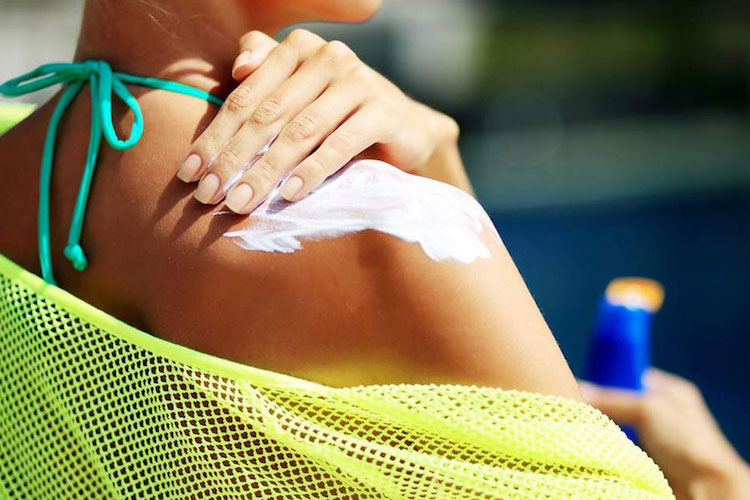- Home
- The Tips & Tricks
- Tips For Protecting Your Skin This Summer

Tips For Protecting Your Skin This Summer
Summer temperature and summer travel means making sure you are protecting your skin. According to the Centers for Disease Control, skin cancer is the most common form of cancer in the United States.
Do you know that some sunscreens can prevent sunburn, reduce your risk of getting skin cancer, and help prevent early signs of skin aging? Sun exposure also causes visible signs of aging like wrinkles and hyperpigmentation.
The FDA regulates sunscreens to ensure they meet safety and effectiveness standards. Manufacturers are required to conduct certain tests before their sunscreen products are sold. How you use sunscreen, and what other protective measures you take, makes a difference in how well you are able to protect yourself and your family from sunburn, skin cancer, and early skin aging caused by the sun.
Broad spectrum sunscreens help protect against both UVA and UVB rays, two types of the sun’s ultraviolet radiation. Broad spectrum sunscreens with a sun protection factor (SPF) value of 15 or more reduce the risk of skin cancer and early skin aging when used as directed with other sun protection measures.
All sunscreens help protect against sunburn. The FDA recommends that you use broad spectrum sunscreen with an SPF of 15 or higher, even on cloudy days. Not all sunscreens have been shown to protect against skin cancer, so it is important to look for a sunscreen that is labeled as broad spectrum and SPF 15 or higher. Broad spectrum sunscreen provides protection against both types of ultraviolet radiation that we are exposed to each day by providing a barrier that absorbs or reflects the UV radiation before it can damage the skin. Sunscreen products that are not broad spectrum or have an SPF of less than 15 must carry the following warning: Spending time in the sun increases your risk of skin cancer and early skin aging. This product has been shown only to help prevent sunburn, not skin cancer or early skin aging.
It is important to know that people of all skin colors are at risk for skin cancer, skin aging, and sunburn from spending time in the sun.
Sun exposure can cause sunburn, skin aging (such as skin spots, wrinkles, or “leathery skin”), and skin cancer. This is true for people of all skin colors, and not just people with very light-colored skin. Sunscreens help protect people from sunburn and, for broad spectrum products with an SPF of at least 15, decrease the risk of skin cancer and early skin aging caused by the sun when used as directed with other sun protection measures.
Don’t be misled into thinking you are protected. There’s no such thing as waterproof sunscreen.
All sunscreens, even those labeled “water resistant,” eventually wash off. Water resistance claims, for 40 or 80 minutes, tell you how much time you can expect to get the labeled SPF-level of protection while moving in and out of the water Manufacturers may not make claims that their sunscreens are “waterproof” or “sweatproof.” Bottom line, no sunscreen is waterproof.
While it is fun to take in the joys of summer with the whole family, sunscreens are not recommended for infants younger than 6 months.
Infants are at greater risk than adults for sunscreen side effects, such as a rash. The FDA recommends that infants be kept out of the sun during the hours of 10 a.m. and 2 p.m., and to use protective clothing for them if they have to be in the sun. Dress infants in lightweight long pants, long-sleeve shirts, and brimmed hats that shade the neck to prevent sunburn. Ask a doctor before applying sunscreen to children younger than 6 months. The best protection for infants is to keep them out of the sun entirely.
When selecting a sunscreen, make sure the label says:
- Broad spectrum:The words “broad spectrum” means that the sunscreen can protect your skin from both types of harmful UV rays — the UVA rays and the UVB rays.
- SPF 30 or higher:The American Academy of Dermatology recommends that you select a sunscreen with an SPF rating of 30 or higher.
- Water resistant:Dermatologists also recommend that you look for the words “water resistant.” This tells you that the sunscreen will stay on wet or sweaty skin for a while before you need to reapply. Water resistance lasts either 40 or 80 minutes. Not all sunscreens offer water resistance.
How you apply your sunscreen also affects how well it protects you. You can find out how to get the most protection from your sunscreen by watching the Academy’s video “How to apply sunscreen”.
While sunscreen is top priority in the summer months, it’s recommended and good practice to wear it year-round.
